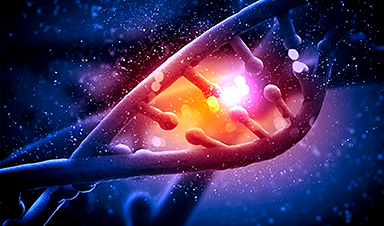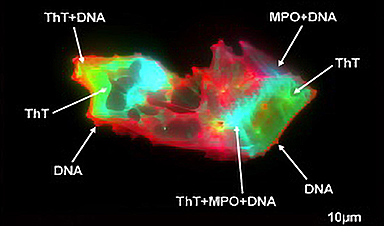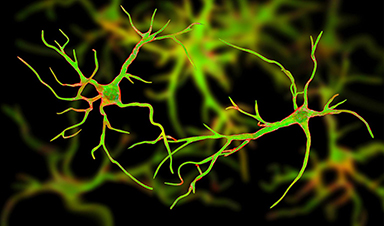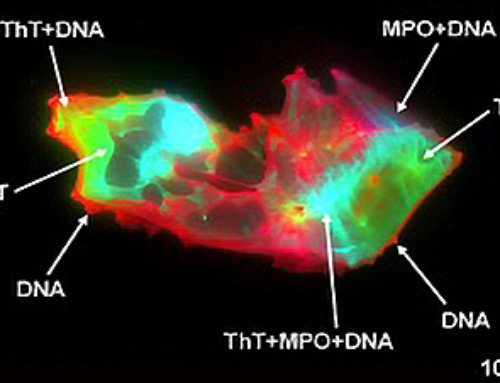DNA is crucial for life, and its organization has been a significant scientific challenge. GROVER, a model developed by BIOTEC, decodes DNA like text, promising advancements in genomics and personalized medicine.
DNA holds the essential information required to sustain life. Deciphering how this information is stored and organized has been one of the greatest scientific challenges of the past century. Now, with GROVER, a new large language model trained on human DNA, researchers can attempt to decode the intricate information concealed within our genome. Developed by a team at the Biotechnology Center (BIOTEC) of Dresden University of Technology, GROVER treats human DNA as text, learning its rules and context to extract functional information about DNA sequences. Published in Nature Machine Intelligence, this innovative tool has the potential to revolutionize genomics and accelerate personalized medicine.
Since the discovery of the double helix, scientists have sought to understand the information encoded in DNA. 70 years later, it is clear that the information hidden in the DNA is multilayered. Only 1-2 % of the genome consists of genes, the sequences that code for proteins.
"DNA has many functions beyond coding for proteins. Some sequences regulate genes, others serve structural purposes, and most sequences serve multiple functions at once. Currently, we don't understand the meaning of most of the DNA. When it comes to understanding the non-coding regions of the DNA, it seems that we have only started to scratch the surface. This is where AI and large language models can help," says Dr. Anna Poetsch, research group leader at the BIOTEC.
DNA as a Language
Large language models, like GPT, have transformed our understanding of language. Trained exclusively on text, the large language models developed the ability to use the language in many contexts.
"DNA is the code of life. Why not treat it like a language?" says Dr. Poetsch. The Poetsch team trained a large language model on a reference human genome. The resulting tool named GROVER, or "Genome Rules Obtained via Extracted Representations", can be used to extract biological meaning from the DNA.
"GROVER learned the rules of DNA. In terms of language, we are talking about grammar, syntax, and semantics. For DNA this means learning the rules governing the sequences, the order of the nucleotides and sequences, and the meaning of the sequences. Like GPT models learning human languages, GROVER has basically learned how to 'speak' DNA," explains Dr. Melissa Sanabria, the researcher behind the project.
The team showed that GROVER can not only accurately predict the following DNA sequences but can also be used to extract contextual information that has biological meaning, e.g., identify gene promoters or protein binding sites on DNA. GROVER also learns processes that are generally considered to be "epigenetic", i.e., regulatory processes that happen on top of the DNA rather than being encoded.
"It is fascinating that by training GROVER with only the DNA sequence, without any annotations of functions, we are actually able to extract information on biological function. To us, it shows that the function, including some of the epigenetic information, is also encoded in the sequence," says Dr. Sanabria.
The DNA Dictionary
"DNA resembles language. It has four letters that build sequences and the sequences carry a meaning. However, unlike a language, DNA has no defined words," says Dr. Poetsch. DNA consists of four letters (A, T, G, and C) and genes, but there are no predefined sequences of different lengths that combine to build genes or other meaningful sequences.
To train GROVER, the team had to first create a DNA dictionary. They used a trick from compression algorithms. "This step is crucial and sets our DNA language model apart from the previous attempts," says Dr. Poetsch.
"We analyzed the whole genome and looked for combinations of letters that occur most often. We started with two letters and went over the DNA, again and again, to build it up to the most common multi-letter combinations. In this way, in about 600 cycles, we have fragmented the DNA into 'words' that let GROVER perform the best when it comes to predicting the next sequence," explains Dr. Sanabria.
The Promise of AI in Genomics
GROVER promises to unlock the different layers of genetic code. DNA holds key information on what makes us human, our disease predispositions, and our responses to treatments.
"We believe that understanding the rules of DNA through a language model is going to help us uncover the depths of biological meaning hidden in the DNA, advancing both genomics and personalized medicine," says Dr. Poetsch.
Reference: "DNA language model GROVER learns sequence context in the human genome" by Melissa Sanabria, Jonas Hirsch, Pierre M. Joubert and Anna R. Poetsch, 23 July 2024, Nature Machine Intelligence.
DOI: 10.1038/s42256-024-00872-0
News
Scientists Uncover Hidden Blood Pattern in Long COVID
Researchers found persistent microclot and NET structures in Long COVID blood that may explain long-lasting symptoms. Researchers examining Long COVID have identified a structural connection between circulating microclots and neutrophil extracellular traps (NETs). The [...]
This Cellular Trick Helps Cancer Spread, but Could Also Stop It
Groups of normal cbiells can sense far into their surroundings, helping explain cancer cell migration. Understanding this ability could lead to new ways to limit tumor spread. The tale of the princess and the [...]
New mRNA therapy targets drug-resistant pneumonia
Bacteria that multiply on surfaces are a major headache in health care when they gain a foothold on, for example, implants or in catheters. Researchers at Chalmers University of Technology in Sweden have found [...]
Current Heart Health Guidelines Are Failing To Catch a Deadly Genetic Killer
New research reveals that standard screening misses most people with a common inherited cholesterol disorder. A Mayo Clinic study reports that current genetic screening guidelines overlook most people who have familial hypercholesterolemia, an inherited disorder that [...]
Scientists Identify the Evolutionary “Purpose” of Consciousness
Summary: Researchers at Ruhr University Bochum explore why consciousness evolved and why different species developed it in distinct ways. By comparing humans with birds, they show that complex awareness may arise through different neural architectures yet [...]
Novel mRNA therapy curbs antibiotic-resistant infections in preclinical lung models
Researchers at the Icahn School of Medicine at Mount Sinai and collaborators have reported early success with a novel mRNA-based therapy designed to combat antibiotic-resistant bacteria. The findings, published in Nature Biotechnology, show that in [...]
New skin-permeable polymer delivers insulin without needles
A breakthrough zwitterionic polymer slips through the skin’s toughest barriers, carrying insulin deep into tissue and normalizing blood sugar, offering patients a painless alternative to daily injections. A recent study published in the journal Nature examines [...]
Multifunctional Nanogels: A Breakthrough in Antibacterial Strategies
Antibiotic resistance is a growing concern - from human health to crop survival. A new study successfully uses nanogels to target and almost entirely inhibit the bacteria P. Aeruginosa. Recently published in Angewandte Chemie, the study [...]
Nanoflowers rejuvenate old and damaged human cells by replacing their mitochondria
Biomedical researchers at Texas A&M University may have discovered a way to stop or even reverse the decline of cellular energy production—a finding that could have revolutionary effects across medicine. Dr. Akhilesh K. Gaharwar [...]
The Stunning New Push to Protect the Invisible 99% of Life
Scientists worldwide have joined forces to build the first-ever roadmap for conserving Earth’s vast invisible majority—microbes. Their new IUCN Specialist Group reframes conservation by elevating microbial life to the same urgency as plants and [...]
Scientists Find a Way to Help the Brain Clear Alzheimer’s Plaques Naturally
Scientists have discovered that the brain may have a built-in way to fight Alzheimer’s. By activating a protein called Sox9, researchers were able to switch on star-shaped brain cells known as astrocytes and turn them into [...]
Vision can be rebooted in adults with amblyopia, study suggests
Temporarily anesthetizing the retina briefly reverts the activity of the visual system to that observed in early development and enables growth of responses to the amblyopic eye, new research shows. In the common vision [...]
Ultrasound-activated Nanoparticles Kill Liver Cancer and Activate Immune System
A new ultrasound-guided nanotherapy wipes out liver tumors while training the immune system to keep them from coming back. The study, published in Nano Today, introduces a biodegradable nanoparticle system that combines sonodynamic therapy and cell [...]
Magnetic nanoparticles that successfully navigate complex blood vessels may be ready for clinical trials
Every year, 12 million people worldwide suffer a stroke; many die or are permanently impaired. Currently, drugs are administered to dissolve the thrombus that blocks the blood vessel. These drugs spread throughout the entire [...]
Reviving Exhausted T Cells Sparks Powerful Cancer Tumor Elimination
Scientists have discovered how tumors secretly drain the energy from T cells—the immune system’s main cancer fighters—and how blocking that process can bring them back to life. The team found that cancer cells use [...]
Very low LDL-cholesterol correlates to fewer heart problems after stroke
Brigham and Women's Hospital's TIMI Study Group reports that in patients with prior ischemic stroke, very low achieved LDL-cholesterol correlated with fewer major adverse cardiovascular events and fewer recurrent strokes, without an apparent increase [...]





















